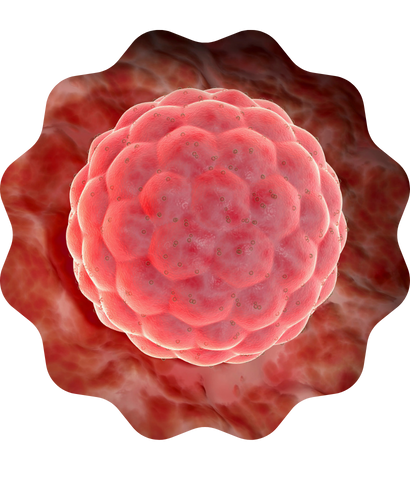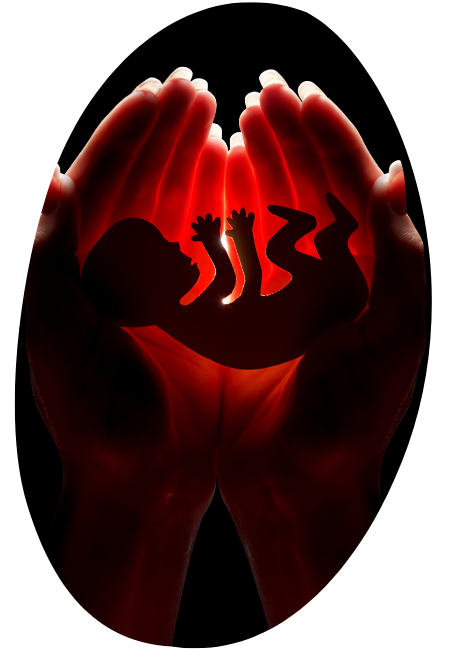At Eva IVF & Women’s Centre, we understand that every fertility journey is unique. If you’re undergoing In Vitro Fertilization (IVF), deciding between Fresh and Frozen Embryo Transfer (FET) is a crucial step.
Both procedures have high success rates, but choosing the right method depends on your individual medical history, response to ovarian stimulation, and personal preferences. This guide is specifically for individuals and couples considering embryo transfer. We’ll walk you through the process, success rates, pre-treatment preparation, and post-treatment care to help you make an informed decision.
What is Embryo Transfer and Who Needs It?
Embryo transfer is the final and most crucial step of the IVF process, where a developed embryo is placed into the uterus for implantation.
Who Should Consider Fresh or Frozen Embryo Transfer?
Both Fresh and Frozen Embryo Transfers are suitable for:
✔ Women undergoing IVF for fertility treatment
✔ Couples struggling with unexplained infertility
✔ Women with PCOS, endometriosis, or hormonal imbalances
✔ Couples looking for preimplantation genetic testing (PGT)
✔ Women with a history of recurrent IVF failure (FET may be better)
💡 Did You Know? Studies suggest that Frozen Embryo Transfers (FETs) may offer higher implantation rates for some patients compared to fresh transfers.

Step-by-Step Fresh Embryo Transfer Process
1. Ovarian Stimulation & Egg Retrieval
📊 Monitoring: Ultrasound scans & hormone tests track follicle development.
💉 Trigger Shot: When follicles are ready, an hCG injection triggers final egg maturation.
2. Egg Fertilization & Embryo Culture
✔ Embryos develop for 3-5 days in an incubator.
3. Fresh Embryo Transfer
✔ No freezing or additional cycles are required.
✔ Medications (progesterone, estrogen) support implantation.
✔ Pregnancy test is conducted 12-14 days post-transfer.
Step-by-Step Frozen Embryo Transfer (FET) Process
1. Embryo Freezing (Cryopreservation)
✔ Embryos are stored for future use, allowing a break before implantation.
2. Endometrial Preparation for Transfer
✔ Estrogen & progesterone are administered to create an optimal uterine environment.
✔ Embryo thawing occurs just before transfer.
3. Frozen Embryo Transfer
✔ Medications are continued to support implantation.
✔ Pregnancy test is conducted 12-14 days post-transfer.
Success Rates of Fresh vs. Frozen Embryo Transfer

What Does Research Say?
Recent studies show FET often leads to better pregnancy outcomes than fresh transfers, especially in certain patients.
✔ Fresh Embryo Transfer Success Rates:
- Women under 35: 48-50% pregnancy rate
- Women 35-40: 35-40% pregnancy rate
- Women over 40: 20-25% pregnancy rate
✔ Frozen Embryo Transfer (FET) Success Rates:
- Women under 35: 55-60% pregnancy rate
- Women 35-40: 40-50% pregnancy rate
- Women over 40: 25-30% pregnancy rate
Why is FET Sometimes Better?
✔ Gives the uterus time to recover from ovarian stimulation
✔ Allows for genetic testing (PGT) before implantation
✔ Reduces the risk of Ovarian Hyperstimulation Syndrome (OHSS)
Pre-Treatment Practices
✔ Eat a Nutrient-Rich Diet (Protein, Folic Acid, Omega-3, Antioxidants)
✔ Maintain a Healthy Weight – BMI should be within the normal range
✔ Quit Smoking, Alcohol & Reduce Caffeine (Limits implantation success)
✔ Manage Stress with Meditation, Yoga, or Light Exercise
✔ Take Prenatal Supplements (Folic Acid, Vitamin D, CoQ10, Iron)
💡 Preparing 2-3 months before embryo transfer can improve success rates significantly!
Post-Treatment Advice
✔ Rest for 24-48 hours after the transfer – Avoid stress & excessive movement.
✔ Avoid Heavy Exercise, Lifting, or Sexual Intercourse – Allow the embryo to implant.
✔ Eat Implantation-Friendly Foods (Avocado, Nuts, Whole Grains, Leafy Greens).
✔ Stay Hydrated & Take All Prescribed Medications as Directed.
✔ Monitor Symptoms – Mild cramping or spotting is normal, but report any severe pain.
When to Take a Pregnancy Test?
✔ DO NOT take a home test early – It can lead to false positives or negatives.
✔ Beta hCG blood test is done 12-14 days after transfer to confirm pregnancy.
Benefits of Fresh vs. Frozen Embryo Transfer – Which One is Right for You?
Advantages of Fresh Embryo Transfer
✅ Shorter Treatment Timeline – No need to wait for a second cycle
✅ No Freezing or Thawing Required – The embryo is implanted immediately
✅ Recommended for Younger Women with No Hormonal Imbalances
Advantages of Frozen Embryo Transfer (FET)
✅ Higher Success Rates – Allows the uterus to be in its optimal state
✅ Lower Risk of OHSS – Especially in women with PCOS or high ovarian response
✅ Better for Genetic Testing (PGT) – Ensures healthy embryo selection
Making the Decision: Fresh or Frozen?
The choice between fresh and frozen embryo transfer should be personalized, taking into account your medical history, ovarian response, and personal preferences. Our team at Eva IVF & Women’s Centre is dedicated to providing individualized guidance to help you make the best decision for your fertility journey.
